Beginners Guide to Monarch Butterflies
What is so special about the Monarch Butterfly?
Monarchs are the only insect that makes an epic, transcontinental journey of up to 3,000 miles in just 8-10 weeks. Which is one of the many reasons that I find them fascinating.
Monarchs are a 6-legged insect, although they generally keep two of those legs tucked up beneath them. They smell with their antennas. They have compound eyes that help them find the flowers upon which they eat nectar with a proboscis. Monarchs have taste receptors on their feet. On their wings, there are millions of air-filled scales which aids in their buoyancy. They weigh less that 1/10th of an ounce.
Disclosure: As an Amazon affiliate, I earn from qualifying purchases at no extra cost to you. My blog contains other affiliate links as well for your convenience. To learn more, you may read my Disclosure Policy. Thank you for supporting my blog!
Females can lay more than 250 eggs in a single day. Though not the most effective flyers, Monarchs can fly at a speed of 30 miles per hour in still air, even faster with a tail wind. They can fly up to 265 miles in a single day. Monarch tagged in Pennsylvania have been seen in Virginia the next day. Scientists are still unsure of all of the Monarch Butterflies migration details but, it is believed that Monarchs use the earth’s magnetic field and the position of the sun to aid them in migration.
Each year, there are four generations of Monarchs. Monarchs over-wintering in Mexico come out of their winter hibernation and begin heading north and east into the United States, and eventually, Canada. The females will mate and lay eggs – the first generation of the year in March and April. The second generation is born during May and June. The third generation is born during July and August. Each of these generations live about 2-6 weeks.

The fourth generation, sometimes called the “Super Monarchs” are born during August, September, and October. These are the Monarchs that make that legendary trip back to the Oyamel Fir Forests in Mexico. The fourth generation lives for 6-8 months. They are able to store large fat reserves and they postpone mating. They are aided in their journey by riding “thermals”. Thermals are long columns of warm air which travel to the south and west in late summer and early fall. Monarchs get up into these currents and are able to just glide, therefore, using less energy.
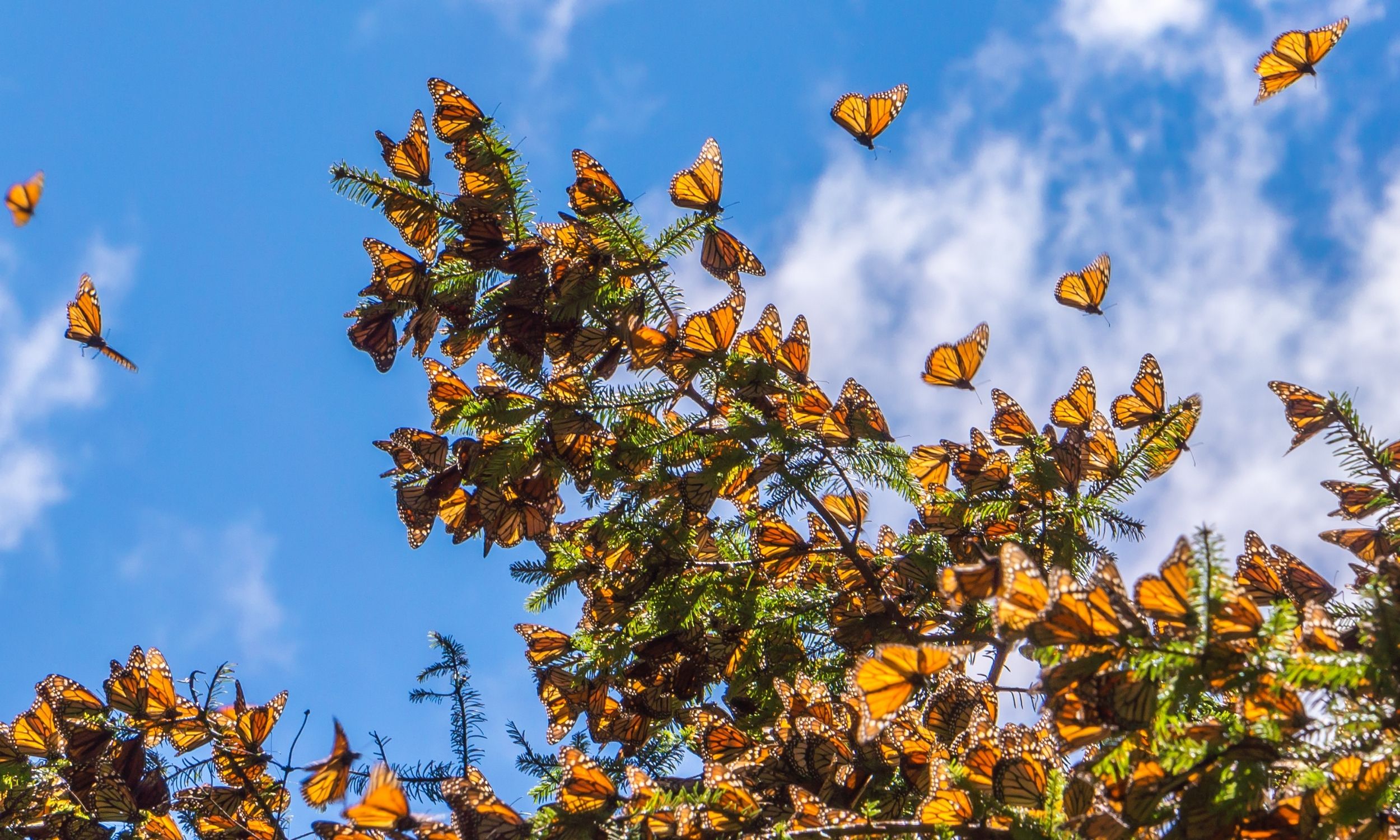
Anatomy of a Monarch Caterpillar/Butterfly
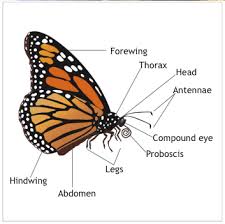
How long does a Monarch Butterfly live?
Monarchs that emerge from their pupae between spring and late August only live about three weeks. Their primary purpose is to reproduce. A female Monarch can lay more than 300 eggs in the couple of weeks she is alive, but most of those eggs (or the caterpillars that hatch) will be devoured by predators. More will become infected with disease and perish. Only about 2% of the eggs laid will survive long enough to produce adults.
Monarchs that emerge from their pupae from late August through early October have immature reproductive organs and are not capable of reproducing. These Monarchs will nectar, store energy in the form of fat, and then head for the mountains of central Mexico, where they will over-winter. The temperature is generally 40 to 50 degrees in these mountains, so the Monarchs are at rest most of the time as it is too cold for them to fly.
By late February, when milkweeds are beginning to grow in Texas, and the fir forests of Mexico are warming up for spring, the Monarchs will mate and the females will fly to Texas, where they will lay eggs and then die. It will be their offspring that continue the journey northward.
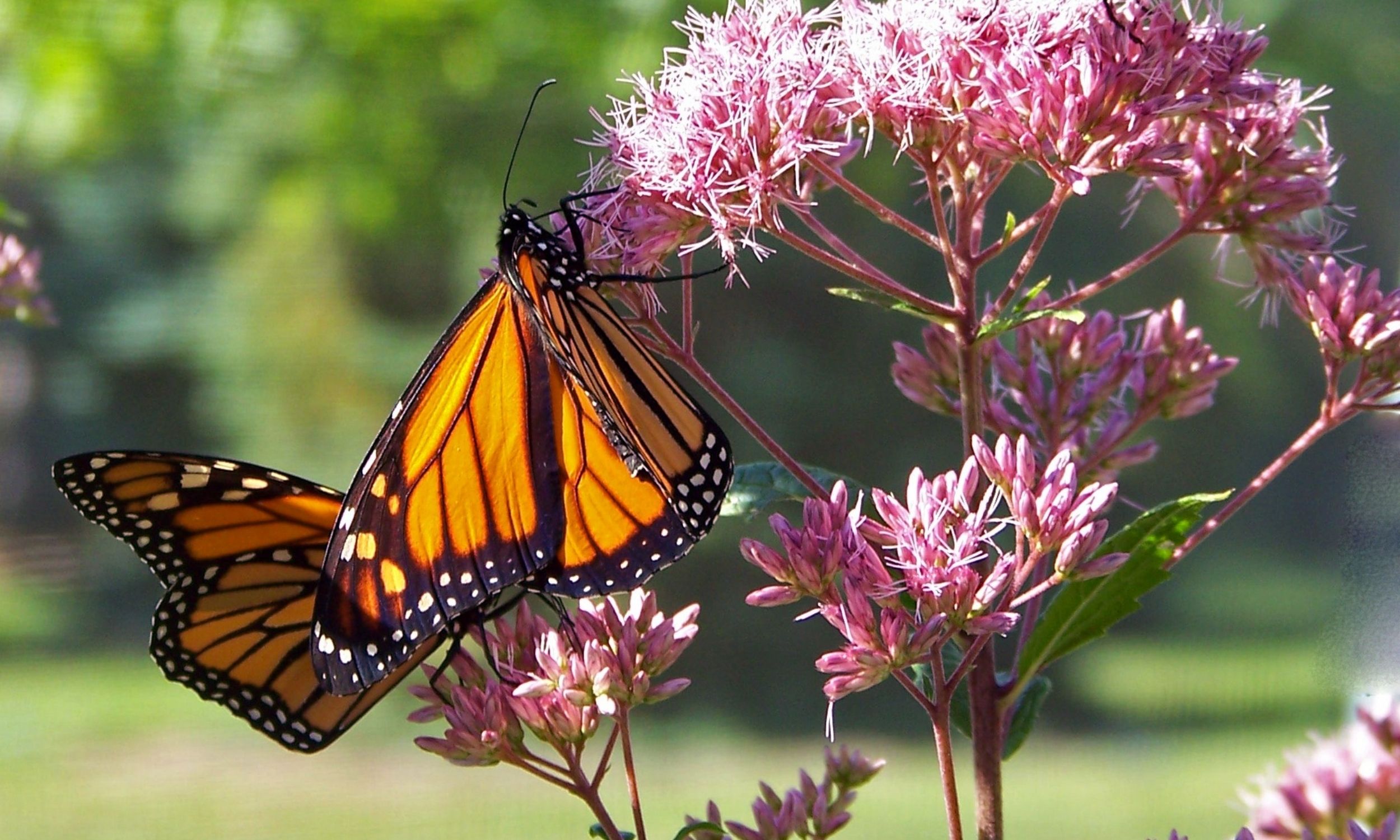
What are the four stages of the Monarch Butterflies lifecycle?
Egg
Monarch females lay their eggs on milkweed, the only plant monarch caterpillars can eat. The eggs are laid singly and generally on the undersides of leaves. The eggs are very small (about the size of the periods at the end of the sentences on this page) and are white in color. Each egg is attached to the leaf by an adhesive fluid that is applied to the egg as it is being laid.
A day or two before the egg hatches, it turns gray in color. This is because you are actually seeing the tiny dark colored caterpillar inside the egg shell. Four to six days after the eggs are deposited, they should hatch.
Larva
Immediately after hatching, the caterpillar is so small it can barely be seen. Before taking its first bite of milkweed, a Monarch caterpillar will usually consume its egg shell. A caterpillar has poor eyesight, being able to distinguish little more than day from night.
It has eight pair of legs (three pair of true legs on its thorax and five pair of prolegs on its abdomen) and a mouth it can use to bite off and chew its food. Just 10 to 14 days after it hatches, the Monarch caterpillar is fully grown, about 2- 3/8″ long.
A monarch caterpillar molts (sheds its skin) five times during the larval stage. Similar to the way a snake sheds its skin when its body has outgrown the skin, a caterpillar does the same. A new, larger skin is always waiting under the one that is shed. The period of time between molting is called the instar.

Must Have Monarch guide
Backyard Monarchs
the Ultimate Guide to Raising Monarch Butterflies
Pupa
When the caterpillar is fully grown it usually leaves the milkweed plant, sometimes crawling 20 or 30 feet away from the milkweed, until it finds a safe place to pupate. The caterpillar lays down a silk-like mat and then attaches itself to the mat with its cremaster (a hook-like apparatus located on the tail end of the caterpillar). The caterpillar allows itself to drop and then it hangs there, upside down in a J-shape, for about one full day.
Just before the caterpillar pupates (shedding its skin for the fifth time), it’s tentacles look wrinkled and crinkled (like they do in the photo to the right).
The caterpillar’s skin is shed for the last time as it passes from the larval (caterpillar) stage to the pupa stage of metamorphosis. Under the caterpillar’s skin this time is a jade green casing which is called a chrysalis. Inside the chrysalis, which is only about an inch long, the caterpillar will miraculously transform into a beautiful butterfly.
Inside the chrysalis, the Monarch’s mouth parts are reconstructed so that the emerging butterfly will have no chewing mouthparts but, instead, a proboscis (a straw-like apparatus which will be used to sip nectar). Never again will it eat solid foods.
The somewhat creepy, crawling creature transforms to become a beautiful flying insect. The emerging butterfly will have 3 pair of legs, not eight like it had as a caterpillar. It’s eyesight will dramatically improve from what it was when it was a caterpillar, and its eyes will be quite large. Reproductive organs will form (they were absent in the larval stage). And all of this happens in just 10 – 14 days.
In just 9 to 14 days the transformation from caterpillar to butterfly is complete. Through the chrysalis, the day before the adult emerges, you can see the orange and black wings of the Monarch butterfly inside.
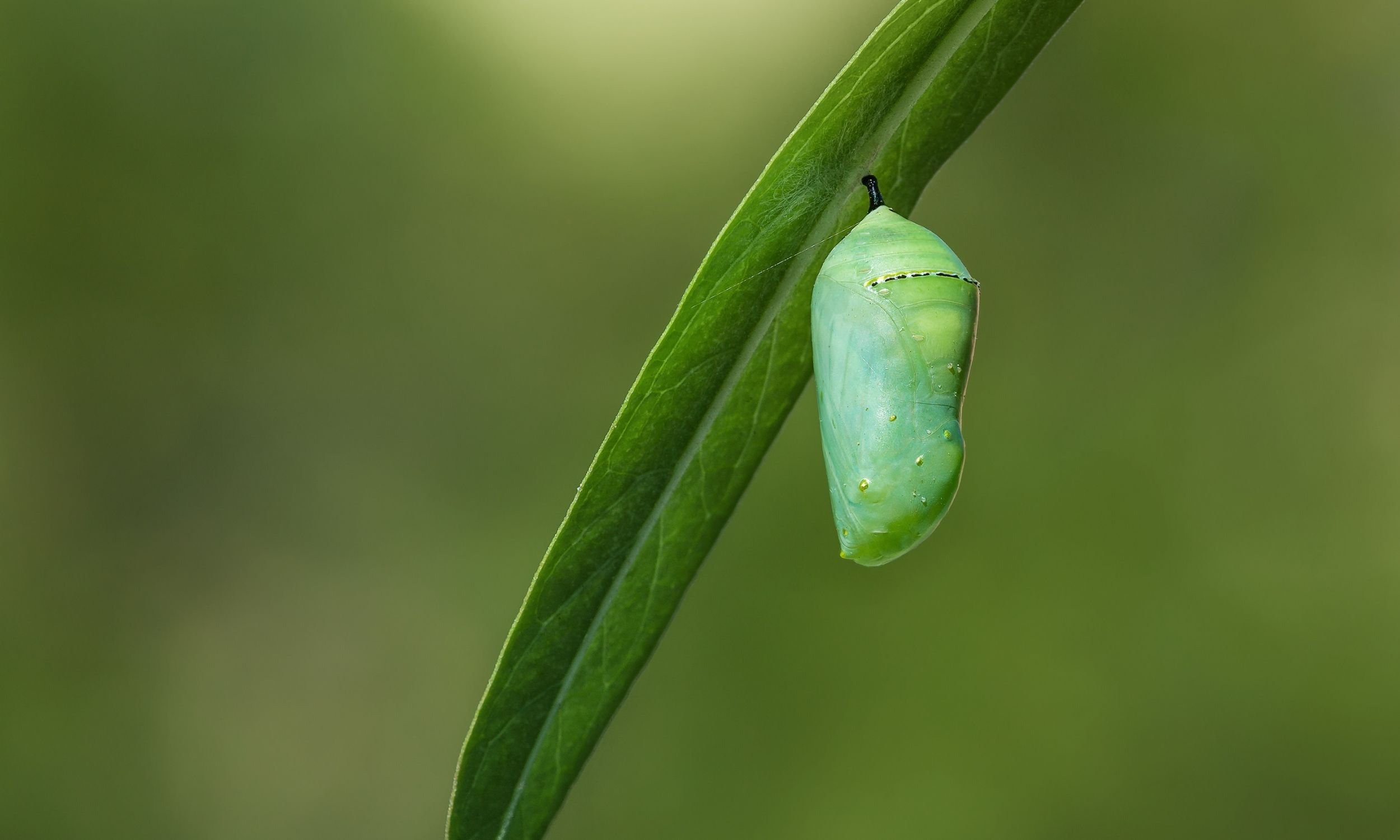
Adult
With no visible signs to signal the emergence of the butterfly from its chrysalis, the chrysalis suddenly cracks open and out comes the Monarch butterfly. Its wings are tiny, crumpled, and wet. The butterfly clings to its empty chrysalis shell as hemolymph, the blood-like substance of insects, is pumped through its body. As the hemolymph fills the Monarch’s body and wings, they enlarge. Right now, this Monarch is extremely vulnerable to predators because it is not yet able to fly.
About an hour after emerging from its pupa (chrysalis), the Monarch’s wings are full-sized, dry, and ready for flying.
Five to seven days after emerging from its chrysalis, a Monarch butterfly is old enough to mate…..and so begins the life cycle of of the next generation.

Keep Track of ALL your Monarchs
Once you start raising Monarchs you will be hooked and have HUNDREDS!! Use our FREE Monarch Recording Charts to help you keep track of them all.
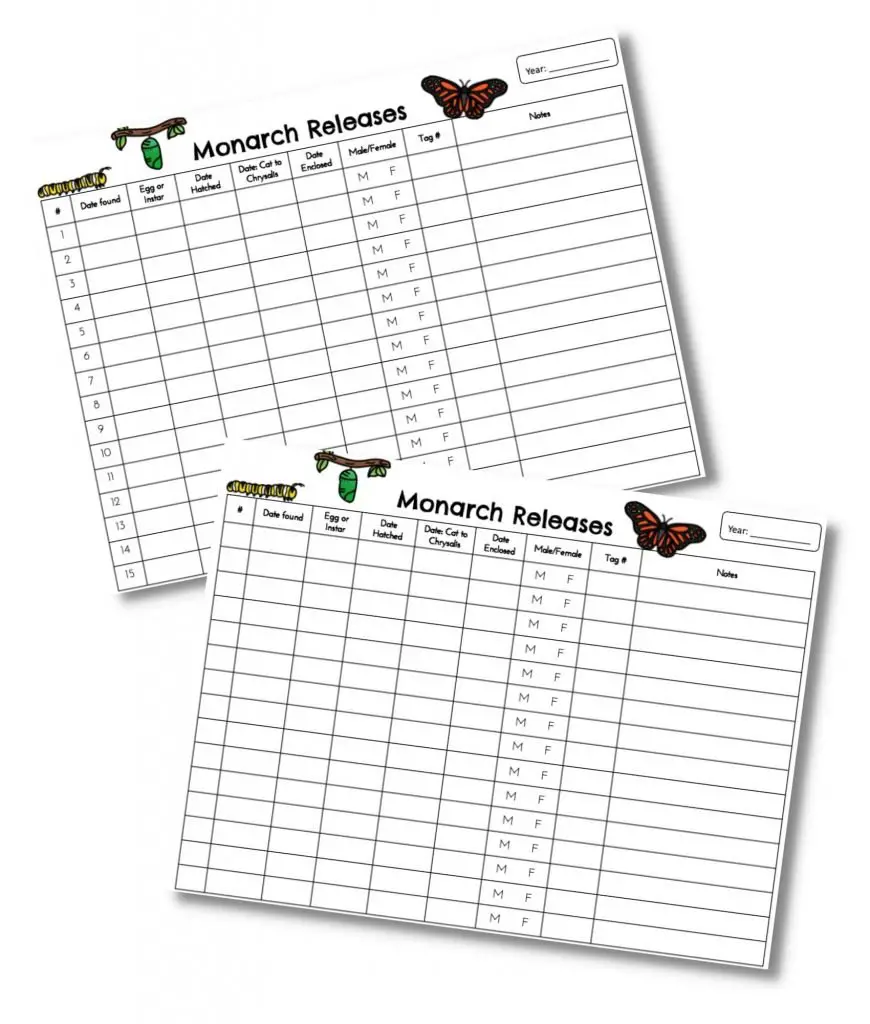
Grab my free Tracker
Monarch Release Chart
Enter your name and email and we will send you our FREE tracker.
Why are Monarch Butterflies at Risk?
Monarchs split their round-trip migration between generations – their life cycles are intricately synchronized with the milkweed upon which they lay their eggs. Wild milkweed species are fast disappearing, the primary culprits are genetically modified organisms (GMO) and the use of glyphosate (Round-Up).
Crops have been genetically modified to have herbicide tolerance. In the last decade or so, there has been an increased demand for ethanol, which comes from corn. Of course farmers want to get as much yield out of their fields as possible. The farmers spray glyphosate from fence post to fence post, killing everything, including weeds, wildflowers, and milkweed.
Milkweed can survive tilling, but it cannot survive the glyphosate. It is estimated that 165 million acres of milkweed habitat (1/3 of the Monarchs’ summer breeding ground) is gone. Glyphosate is also used by utility and transportation departments. It is sprayed along utility lines, pipelines, and highways. which are also prime milkweed habitats.
It is no wonder why Monarchs, honey bees, and other pollinator populations have been decreasing at an alarming rate. There is less and less of healthy habitat for them to survive. We are poisoning them out of existence!
If you want to help, there are some things you can do.
Consider buying non-GMO foods. Look at your labels carefully. There are many companies that are proud of the fact that their products are GMO free. They get great satisfaction displaying this information on their products.
And plant a pollinator garden in your yard! How to Start a Pollinator Garden is a great place to start to learn more about pollinator gardens and what you should plant.

Getting Your Kiddos Involved…
I would say that our kiddos love Monarchs just as much as I do. Henleigh was the first one to spot a caterpillar in the garden this year! They love finding them, releasing them and reading about them. Here are some books you can read with your kiddos or just read for yourself.
You may also enjoy these related articles:
- Grow Butterfly Weed for a Beautiful Butterfly Garden
- Plants for Butterfly Gardens: Attract More Butterflies to Your Yard with These Beautiful Flowers
- Plan Your Own Butterfly Garden: A Beginner’s Guide
Did you enjoy this article? Want to hear more? Stay in touch! Sign up below to receive weekly tips and inspiration for your homestead.
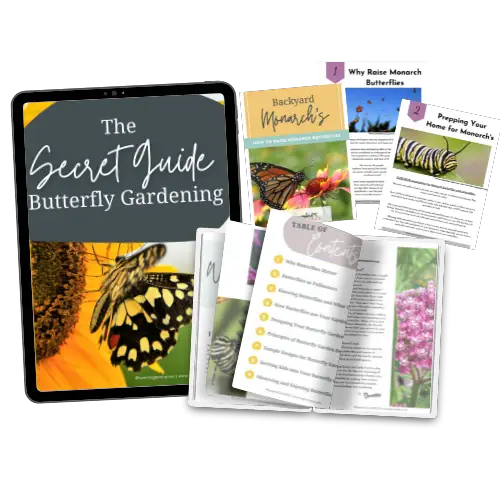
Get our
Secret Guide to Butterfly Gardening
Everything you need to start and maintain a vibrant and colorful butterfly garden.
